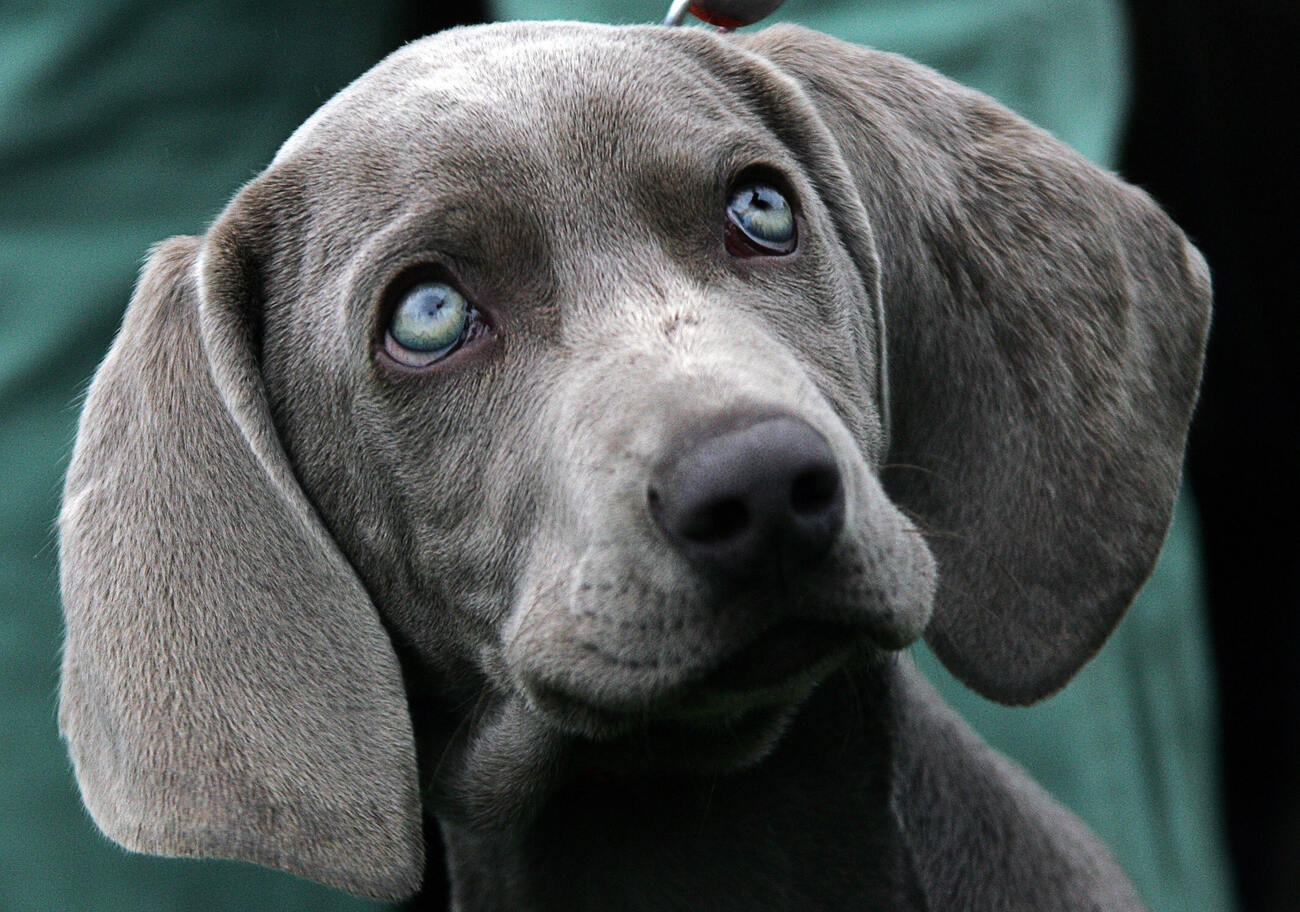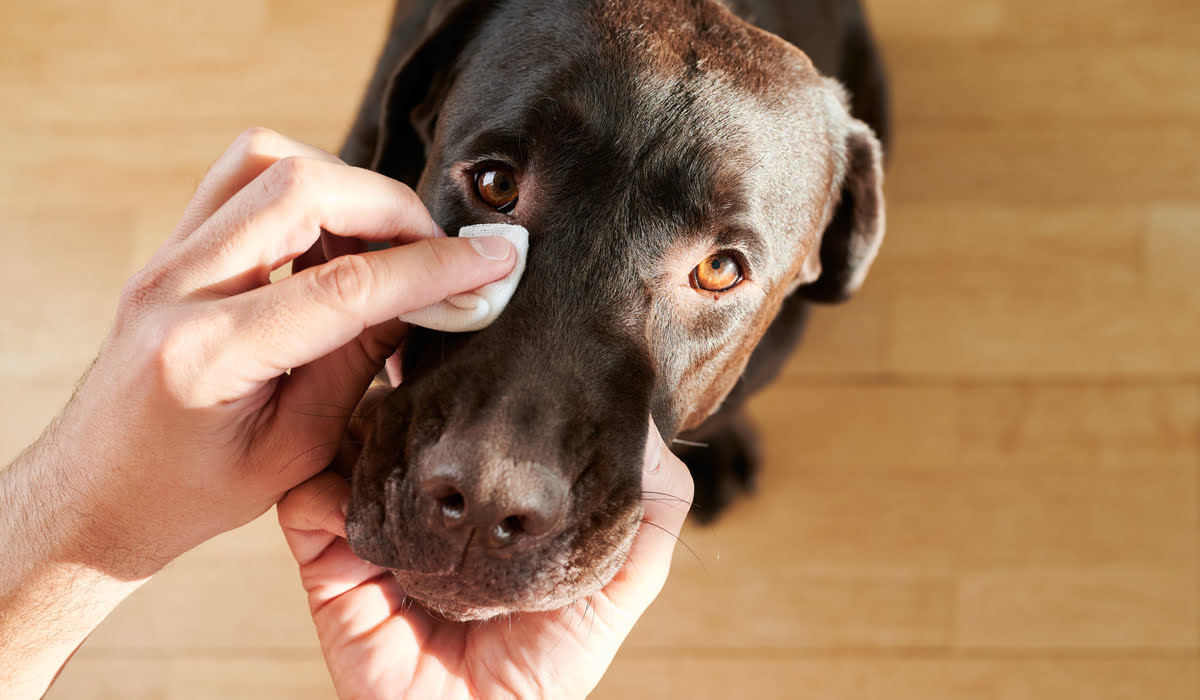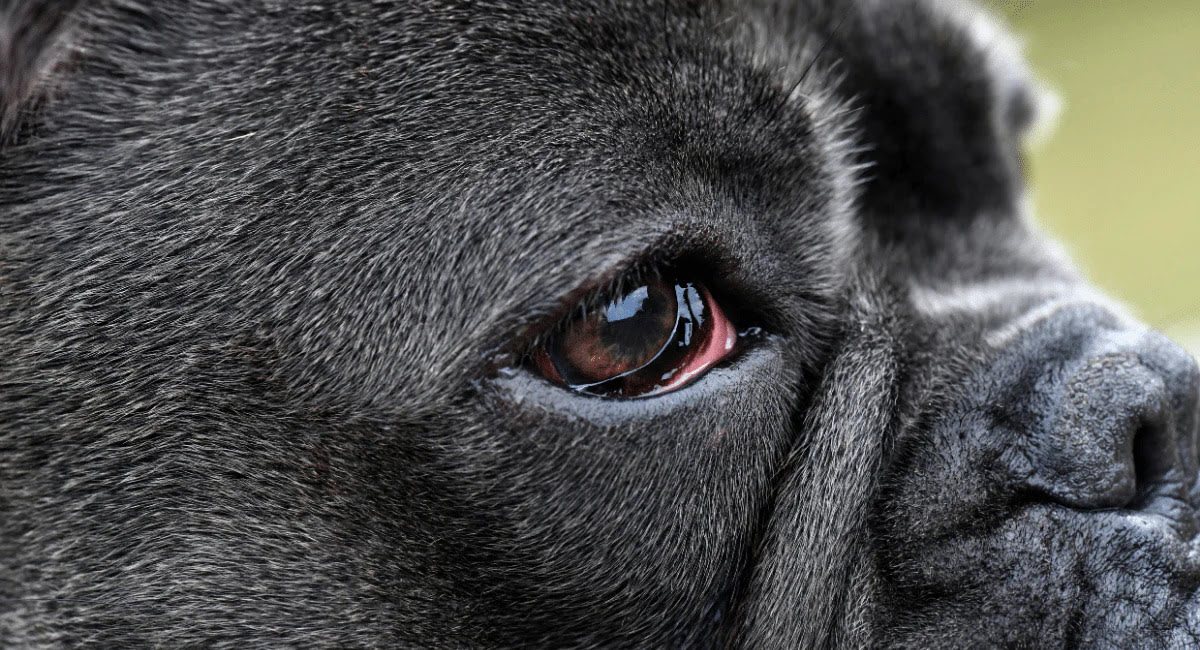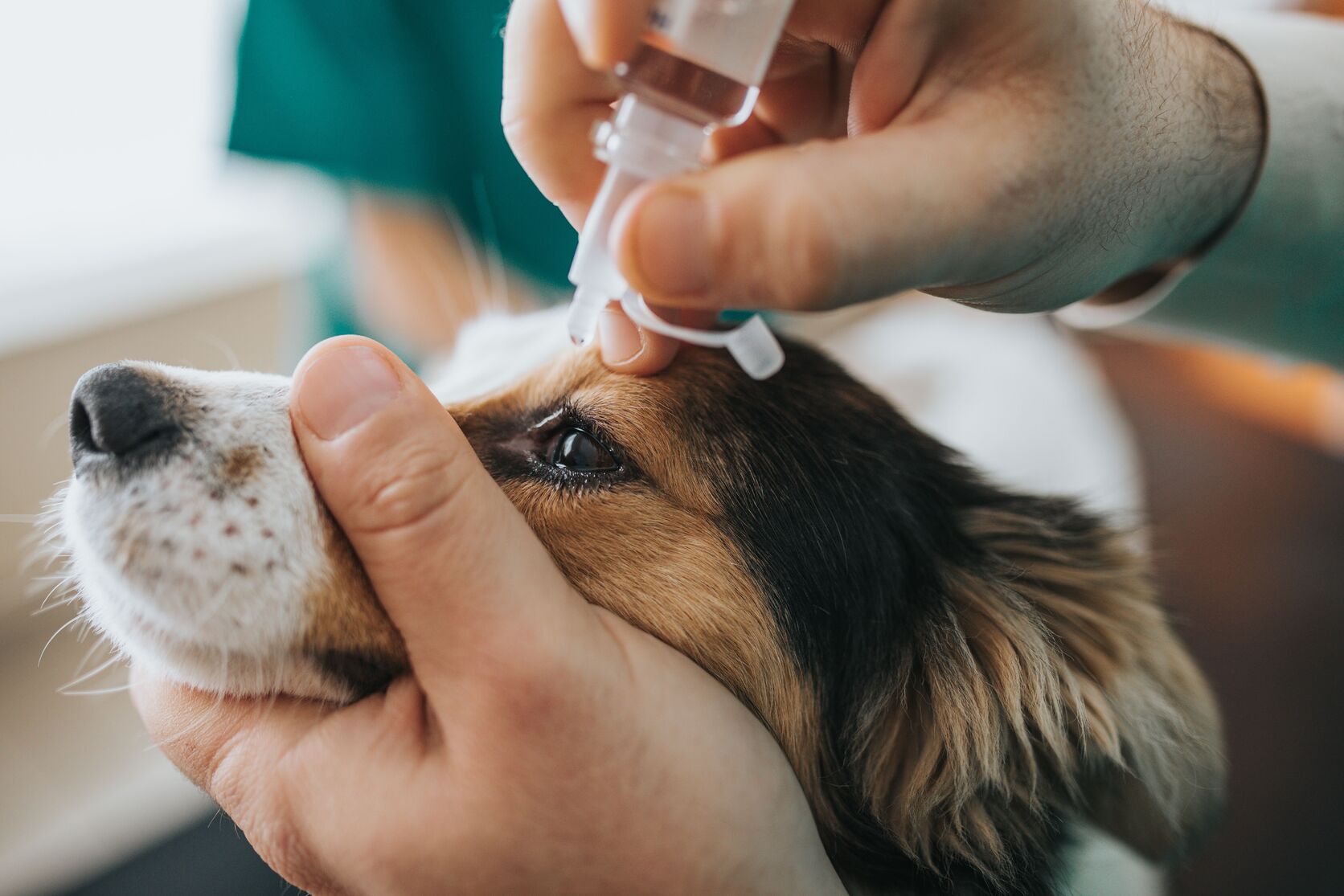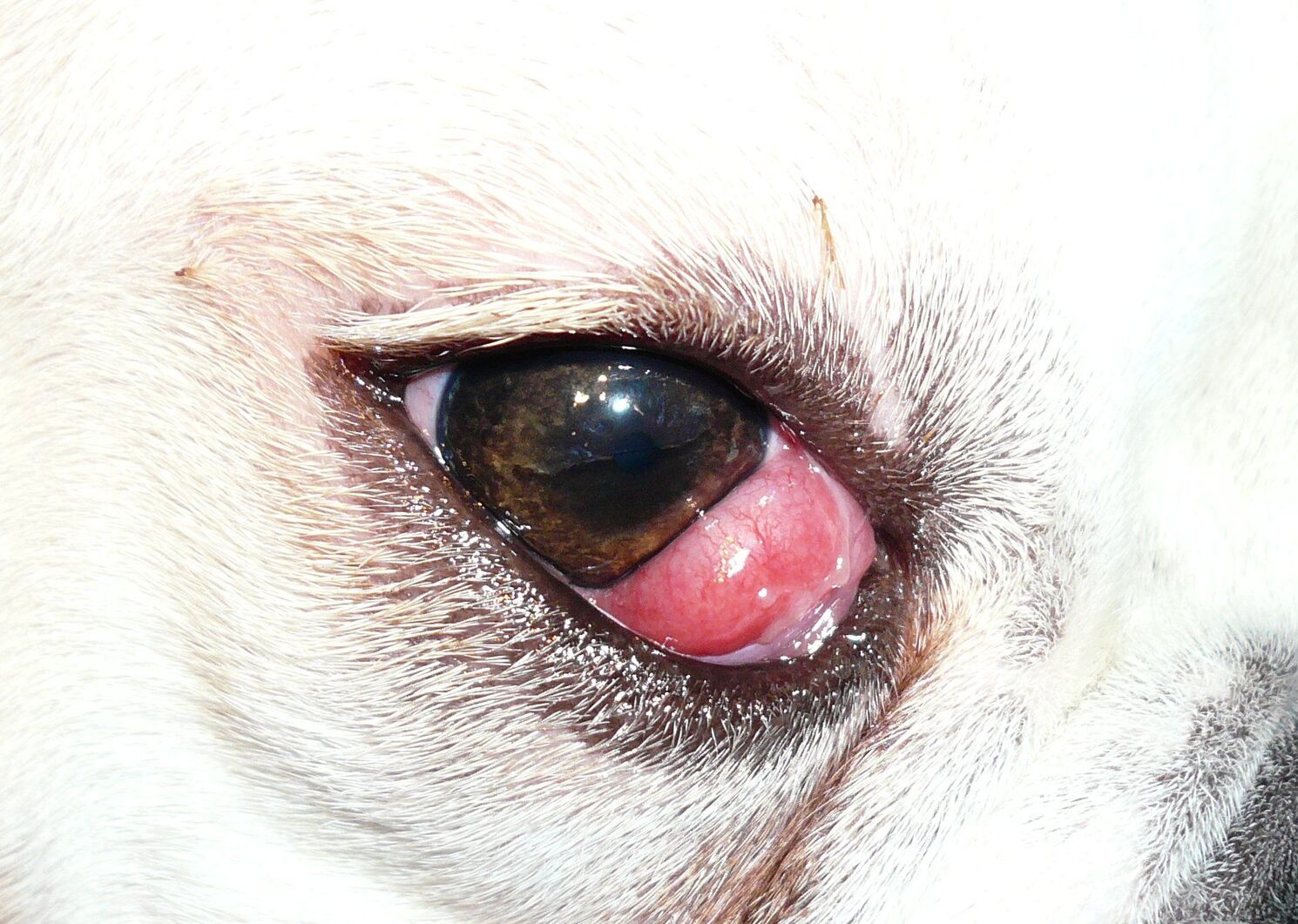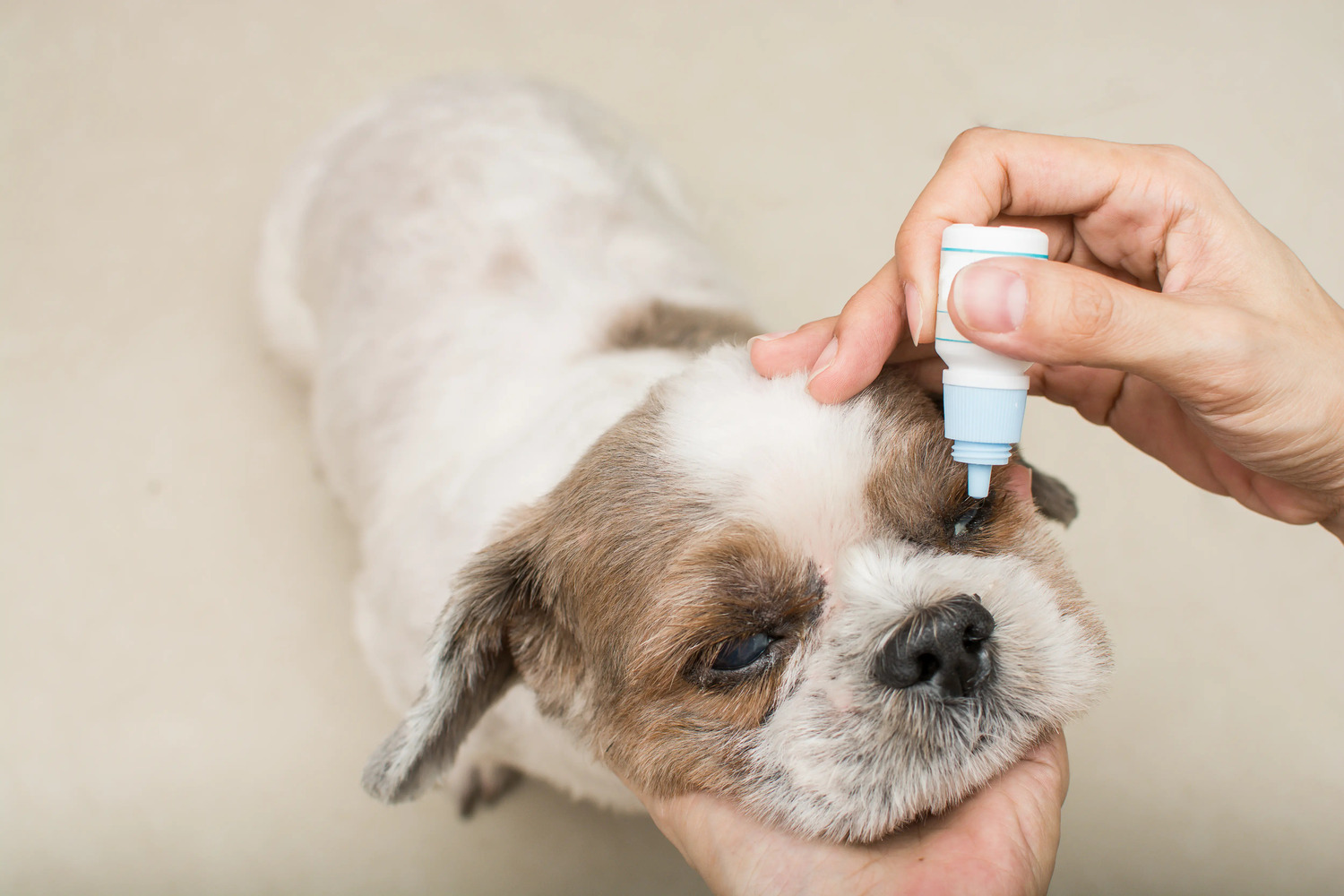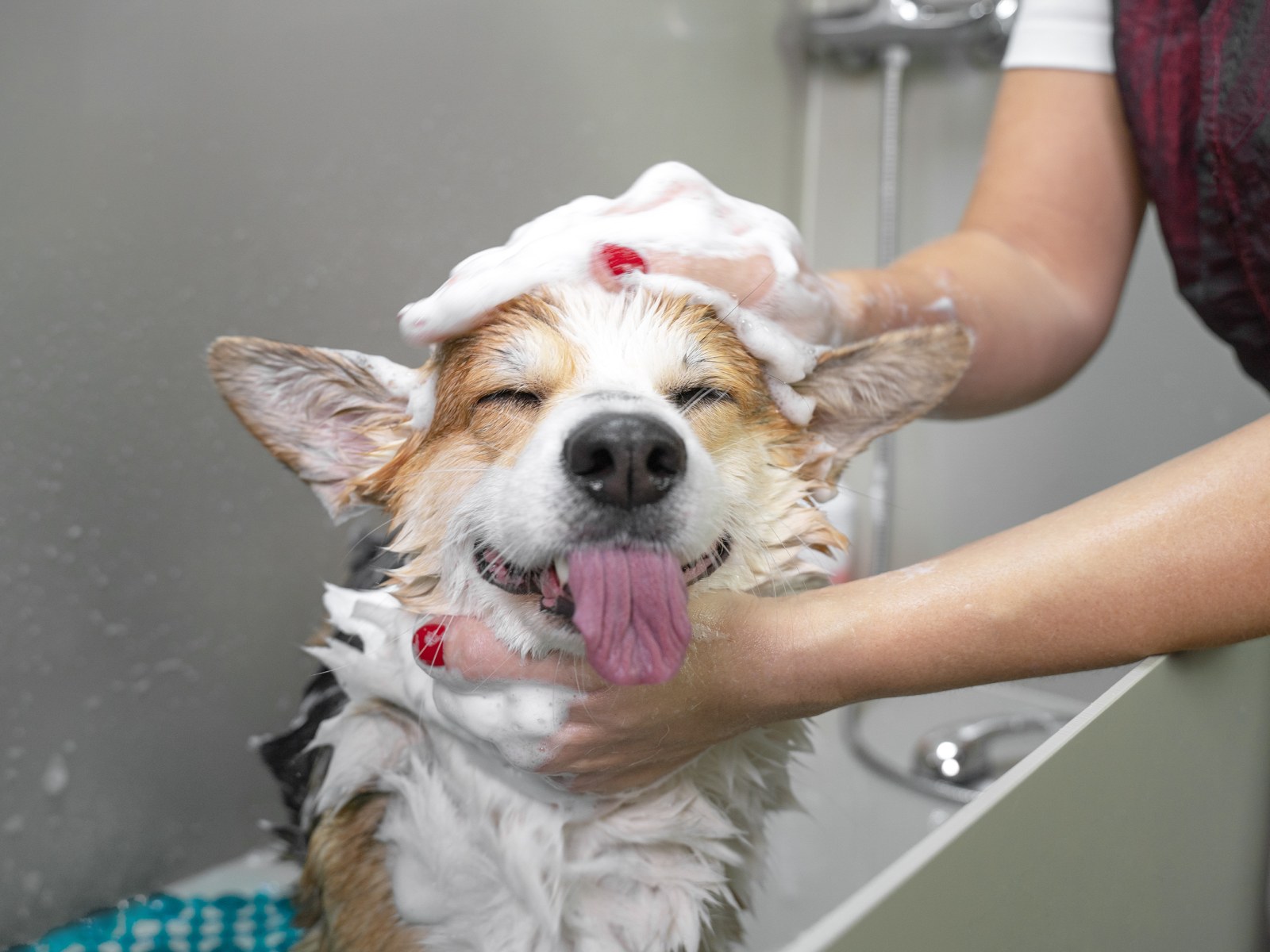Home>Health & Wellness>Common Health Issues>Eye and Ear Health>What Are Genetic Eye Abnormalities In Breeding Dogs


Eye and Ear Health
What Are Genetic Eye Abnormalities In Breeding Dogs
Published: February 11, 2024
Learn about genetic eye abnormalities in breeding dogs and how to maintain their eye and ear health. Get expert tips and advice on preventing and managing eye and ear issues in dogs.
(Many of the links in this article redirect to a specific reviewed product. Your purchase of these products through affiliate links helps to generate commission for Pawsomeoldies.com, at no extra cost. Learn more)
Table of Contents
Introduction
Genetic eye abnormalities in breeding dogs are a significant concern for both breeders and pet owners. These hereditary conditions can impact the overall health and well-being of dogs, potentially leading to vision impairment or even blindness. Understanding the underlying causes, common abnormalities, and best breeding practices is crucial for promoting the ocular health of future generations of dogs.
Genetic eye abnormalities are inherited conditions that are passed down from one generation to the next through the genetic material of the parents. These abnormalities can manifest in various forms, ranging from minor issues to severe impairments that significantly affect a dog's quality of life. As responsible stewards of canine welfare, breeders play a pivotal role in mitigating the prevalence of genetic eye abnormalities within specific breeds.
By delving into the intricacies of genetic eye abnormalities in breeding dogs, we can gain valuable insights into the importance of informed breeding practices, comprehensive testing, and proactive measures to safeguard the ocular health of these beloved animals. This article aims to shed light on the prevalence of genetic eye abnormalities, the impact on breeding dogs, and the measures that can be taken to minimize the occurrence of these conditions in future generations.
Read more: What Are Common Dog Breeds That Get Cancer
Understanding Genetic Eye Abnormalities
Genetic eye abnormalities in breeding dogs encompass a diverse range of hereditary conditions that affect the structure, function, or development of the eyes. These abnormalities are rooted in the genetic makeup of the dogs, often stemming from inherited mutations or genetic predispositions passed down through generations. Understanding the underlying mechanisms of these abnormalities is crucial for breeders, veterinarians, and pet owners alike.
The spectrum of genetic eye abnormalities is broad, encompassing various conditions such as progressive retinal atrophy (PRA), cataracts, glaucoma, and retinal dysplasia, among others. Each of these conditions presents unique challenges and implications for the affected dogs. For instance, PRA is characterized by the progressive degeneration of the retina, leading to vision loss and eventual blindness. On the other hand, cataracts involve the clouding of the lens, which can impede vision and necessitate surgical intervention.
These abnormalities can manifest at different stages of a dog's life, with some becoming apparent in puppyhood while others may develop later in adulthood. The impact of genetic eye abnormalities extends beyond the physical impairment, often influencing the emotional well-being and overall quality of life of the affected dogs.
Furthermore, the inheritance patterns of these abnormalities vary, with some following simple Mendelian inheritance while others exhibit more complex genetic traits. In some cases, these conditions may be recessive, requiring both parents to carry the mutated gene for the abnormality to manifest in their offspring. Understanding the genetic basis of these abnormalities is essential for implementing effective breeding strategies to minimize their prevalence in future generations.
By comprehensively understanding genetic eye abnormalities, breeders and veterinarians can make informed decisions regarding breeding practices, genetic testing, and responsible selection of breeding stock. Additionally, heightened awareness of these conditions fosters proactive measures to support affected dogs and minimize the impact of genetic eye abnormalities on canine populations.
In essence, a deep understanding of genetic eye abnormalities is pivotal in guiding efforts to promote the ocular health and well-being of breeding dogs. Through ongoing research, collaboration, and education, the collective aim is to mitigate the prevalence of these hereditary conditions and ensure a brighter, clearer future for generations of dogs to come.
Common Genetic Eye Abnormalities in Breeding Dogs
Genetic eye abnormalities in breeding dogs encompass a spectrum of conditions that can significantly impact ocular health. Understanding the common abnormalities prevalent in specific breeds is essential for breeders, veterinarians, and pet owners. By recognizing these conditions and their implications, proactive measures can be taken to minimize their prevalence and support affected dogs.
Progressive Retinal Atrophy (PRA)
Progressive retinal atrophy (PRA) stands as one of the most prevalent genetic eye abnormalities in breeding dogs. This condition leads to the progressive degeneration of the retina, resulting in vision impairment and eventual blindness. PRA can manifest in various forms, with affected dogs experiencing a gradual decline in vision, often starting with night blindness and advancing to complete loss of sight. Breeds such as the Labrador Retriever, Cocker Spaniel, and Irish Setter are particularly susceptible to PRA.
Cataracts
Cataracts, characterized by the clouding of the lens, are another common genetic eye abnormality observed in breeding dogs. This condition can impede vision and, if left untreated, lead to blindness. Cataracts may develop at different stages of a dog's life, and certain breeds, including the Siberian Husky, Boston Terrier, and Miniature Poodle, are predisposed to this condition.
Retinal Dysplasia
Retinal dysplasia encompasses a group of developmental disorders affecting the retina, leading to visual impairment in affected dogs. This condition can manifest as folds or detachment of the retinal tissue, impacting visual acuity. Breeds such as the Cavalier King Charles Spaniel, Bedlington Terrier, and English Springer Spaniel are known to be susceptible to retinal dysplasia.
Glaucoma
Glaucoma, characterized by increased intraocular pressure, poses a significant threat to canine ocular health. This condition can lead to optic nerve damage and irreversible vision loss if left untreated. Breeds such as the Cocker Spaniel, Basset Hound, and Chow Chow are predisposed to glaucoma, highlighting the importance of proactive screening and management.
Breed-Specific Abnormalities
In addition to these common genetic eye abnormalities, certain breeds may exhibit unique ocular conditions linked to their genetic predispositions. For instance, Collies and related breeds are prone to collie eye anomaly, a condition affecting the development of the eye. Similarly, the Shih Tzu breed is predisposed to progressive retinal atrophy and other hereditary eye conditions.
Understanding the prevalence of these genetic eye abnormalities in specific breeds is instrumental in guiding breeding practices and promoting informed decision-making. By identifying and addressing these conditions, breeders can work towards minimizing the impact of genetic eye abnormalities in future generations of dogs, ultimately fostering healthier and happier canine populations.
Breeding Practices to Minimize Genetic Eye Abnormalities
Implementing responsible breeding practices is paramount in minimizing the prevalence of genetic eye abnormalities in breeding dogs. By prioritizing ocular health and integrating proactive measures into breeding programs, breeders can significantly contribute to the well-being of future canine generations. Here are essential breeding practices aimed at mitigating the impact of genetic eye abnormalities:
Selective Breeding and Genetic Screening
Breeders should prioritize genetic screening for common eye abnormalities in potential breeding stock. By conducting thorough ocular examinations and genetic testing, breeders can identify dogs free from hereditary eye conditions and use them as breeding candidates. This selective breeding approach aims to reduce the likelihood of passing on genetic eye abnormalities to offspring, thereby promoting ocular health in subsequent generations.
Collaboration with Veterinary Specialists
Collaborating with veterinary ophthalmologists and specialists can provide invaluable insights into the ocular health of breeding dogs. Regular eye examinations and consultations with experts in veterinary ophthalmology enable breeders to make informed decisions regarding breeding pair selection and overall management of ocular health within their breeding programs. This collaborative approach fosters a comprehensive understanding of genetic eye abnormalities and facilitates proactive measures to minimize their impact.
Breed-Specific Health Registries
Participation in breed-specific health registries allows breeders to contribute to the collective knowledge of genetic eye abnormalities within specific breeds. By documenting and sharing information on ocular health and hereditary conditions, breeders can collectively work towards minimizing the prevalence of genetic eye abnormalities. Access to comprehensive health data empowers breeders to make informed breeding decisions, ultimately supporting the long-term ocular well-being of their chosen breeds.
Education and Breed-Specific Awareness
Educating fellow breeders, pet owners, and the broader canine community about the significance of genetic eye abnormalities is crucial for fostering awareness and proactive measures. By sharing knowledge about prevalent eye conditions and the impact of responsible breeding practices, breeders can advocate for informed decision-making and collaborative efforts to minimize the occurrence of genetic eye abnormalities. This educational outreach contributes to a collective commitment to prioritizing ocular health in breeding programs.
Read more: What Is Wall Eye In Dogs
Ethical Breeding Standards
Adhering to ethical breeding standards and guidelines set forth by reputable canine organizations is fundamental in promoting ocular health and minimizing the prevalence of genetic eye abnormalities. By upholding responsible breeding practices, breeders demonstrate a commitment to the well-being of their dogs and the preservation of breed integrity. Ethical breeding encompasses transparency, genetic health testing, and a dedication to prioritizing the overall health, including ocular health, of future generations of dogs.
By integrating these breeding practices, breeders can play a pivotal role in minimizing the impact of genetic eye abnormalities in breeding dogs. Through a collective commitment to responsible breeding, genetic screening, collaboration with veterinary specialists, and educational outreach, breeders contribute to the preservation of ocular health and the well-being of canine populations for generations to come.
Testing and Screening for Genetic Eye Abnormalities
Testing and screening for genetic eye abnormalities play a pivotal role in promoting the ocular health of breeding dogs. By implementing comprehensive testing protocols and proactive screening measures, breeders and veterinary professionals can identify hereditary eye conditions, make informed breeding decisions, and support the long-term well-being of canine populations.
Ocular Examinations and Genetic Testing
Thorough ocular examinations conducted by veterinary ophthalmologists are essential for assessing the eye health of breeding dogs. These examinations encompass a range of diagnostic procedures, including ophthalmoscopy, tonometry, and electroretinography, to evaluate the structure and function of the eyes. Additionally, genetic testing enables the identification of specific mutations associated with genetic eye abnormalities, providing valuable insights into the genetic predispositions of breeding stock.
Breed-Specific Genetic Panels
Breed-specific genetic panels tailored to identify mutations linked to prevalent eye conditions offer a targeted approach to genetic testing. These panels are designed to detect known genetic variants associated with specific genetic eye abnormalities prevalent in particular breeds. By leveraging breed-specific genetic panels, breeders can gain a comprehensive understanding of the genetic predispositions within their chosen breeds, facilitating informed breeding decisions and proactive management of ocular health.
Read more: What Causes A Dog’s Eye To Twitch
Collaborative Research and Data Sharing
Collaborative research initiatives and data sharing among breeders, veterinary professionals, and canine health organizations contribute to the collective knowledge of genetic eye abnormalities. By participating in research studies and sharing health data, breeders contribute to the ongoing efforts to identify genetic markers, understand inheritance patterns, and develop effective screening protocols. This collaborative approach fosters a deeper understanding of genetic eye abnormalities and supports the implementation of evidence-based testing and screening strategies.
Proactive Management and Follow-Up
Proactive management of breeding dogs' ocular health involves regular follow-up examinations and monitoring of potential genetic eye abnormalities. By establishing a comprehensive management plan in collaboration with veterinary ophthalmologists, breeders can track the ocular health of their breeding stock, identify early signs of hereditary conditions, and implement targeted interventions to support affected dogs. This proactive approach aims to minimize the impact of genetic eye abnormalities and promote the overall ocular well-being of breeding dogs.
Integration of Advanced Imaging Technologies
The integration of advanced imaging technologies, such as optical coherence tomography (OCT) and electroretinography (ERG), enhances the diagnostic capabilities for detecting and monitoring genetic eye abnormalities. These non-invasive imaging modalities provide detailed insights into retinal structure and function, facilitating early detection of abnormalities and guiding informed breeding decisions. By leveraging advanced imaging technologies, breeders and veterinary professionals can enhance the precision and thoroughness of ocular assessments, ultimately contributing to the proactive management of genetic eye abnormalities.
In essence, testing and screening for genetic eye abnormalities are integral components of responsible breeding practices. By embracing comprehensive ocular examinations, genetic testing, collaborative research, proactive management, and advanced imaging technologies, breeders and veterinary professionals uphold a collective commitment to safeguarding the ocular health of breeding dogs and minimizing the prevalence of hereditary eye conditions in future generations.
Conclusion
In conclusion, genetic eye abnormalities pose significant challenges within the realm of breeding dogs, impacting the ocular health and overall well-being of canine populations. The prevalence of conditions such as progressive retinal atrophy (PRA), cataracts, retinal dysplasia, and glaucoma underscores the importance of informed breeding practices, comprehensive testing, and proactive measures to mitigate the impact of these hereditary conditions. By delving into the intricacies of genetic eye abnormalities, breeders, veterinary professionals, and canine health advocates can collectively work towards fostering healthier and happier generations of dogs.
The understanding of genetic eye abnormalities is foundational in guiding responsible breeding practices. By recognizing the inheritance patterns, prevalence in specific breeds, and the implications for affected dogs, breeders can make informed decisions to minimize the occurrence of these conditions in future generations. Selective breeding, genetic screening, collaboration with veterinary specialists, and participation in breed-specific health registries are instrumental in promoting ocular health and supporting the long-term well-being of breeding dogs.
Furthermore, the integration of comprehensive testing and screening protocols, including ocular examinations, genetic testing, and advanced imaging technologies, empowers breeders and veterinary professionals to identify hereditary eye conditions, make informed breeding decisions, and implement proactive management strategies. This proactive approach aims to minimize the impact of genetic eye abnormalities and uphold a collective commitment to safeguarding the ocular health of breeding dogs.
By prioritizing ethical breeding standards, education, and collaborative research, the collective efforts of breeders and veterinary professionals contribute to the preservation of ocular health and the mitigation of genetic eye abnormalities within specific breeds. This commitment extends beyond individual breeding programs, fostering a shared dedication to promoting the ocular well-being of canine populations for generations to come.
In essence, the journey towards minimizing the prevalence of genetic eye abnormalities in breeding dogs requires a harmonious blend of knowledge, collaboration, and proactive measures. By embracing these principles, the collective aim is to pave the way for clearer, brighter futures for generations of dogs, where ocular health is prioritized, hereditary conditions are minimized, and the well-being of breeding dogs is upheld with unwavering dedication.
